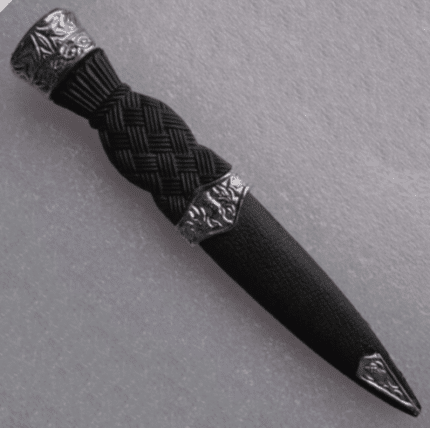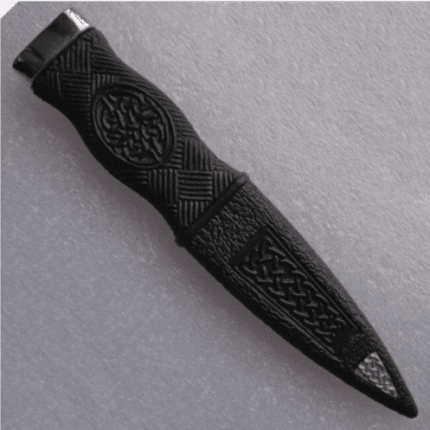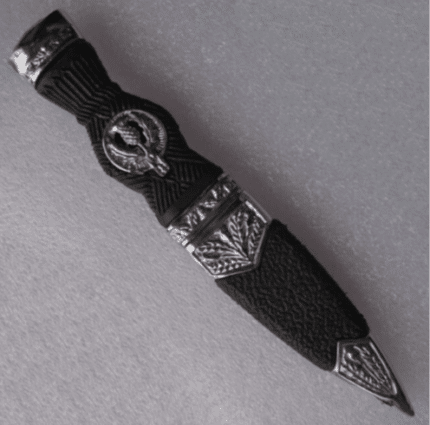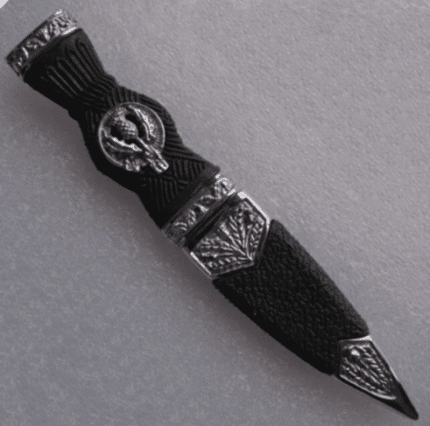SGIAN DUBHS/KILT KNIVES
Sgian dubh for sale
The Sgian Dubh, a traditional Scottish knife, holds a unique and storied place in Scottish culture, embodying both functional utility and rich symbolism. Historically, it has been an integral part of Scottish Highland dress, discreetly tucked into the top of the kilt hose. The term “sgian dubh” translates to “black knife” in Scottish Gaelic, referencing the traditional dark handle of the knife. This compact blade, often ornately adorned, has evolved from a practical tool into a symbol of Scottish heritage and craftsmanship.
It has deep cultural roots, tracing its origins to the Scottish Highlands where it served as a tool for daily tasks and self-defense. Over time, it became an essential accessory in Highland dress, worn for both practical and ceremonial purposes. Its significance extends beyond mere functionality; the sgian dubh is a testament to Scotland’s martial history and the enduring pride Scots take in their traditions.
Custom Sgian Dubh
When it comes to acquiring a truly unique and meaningful piece, our collection of Custom Sgian Dubh offers a range of personalized options to suit individual preferences and tastes. Customers have the opportunity to choose from a selection of high-quality materials for both the blade and handle, allowing for a bespoke creation that aligns with their style. Whether it’s a preference for the rich warmth of wood, the sleekness of metal, or the timeless appeal of traditional Scottish knives
Care and Maintenance
Visit here for trousers and trews






